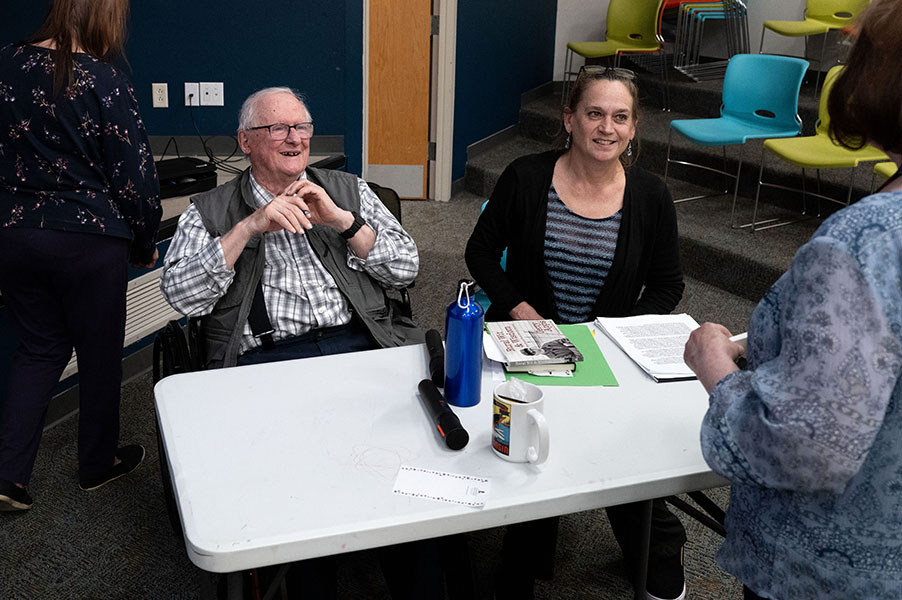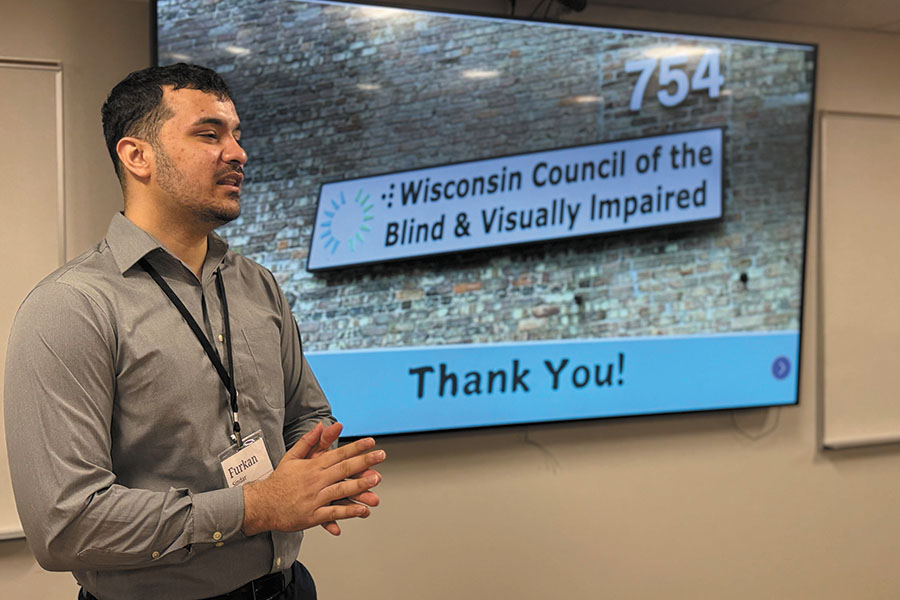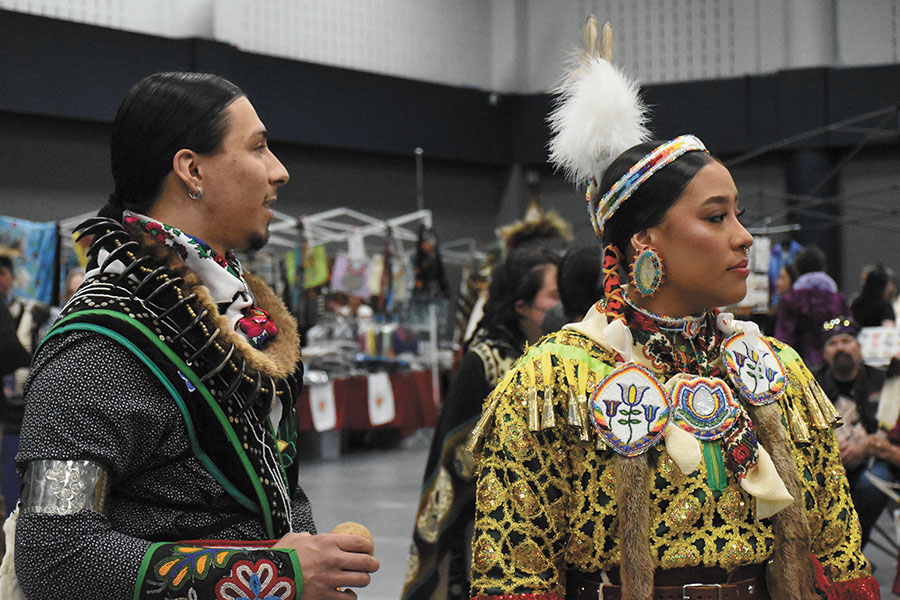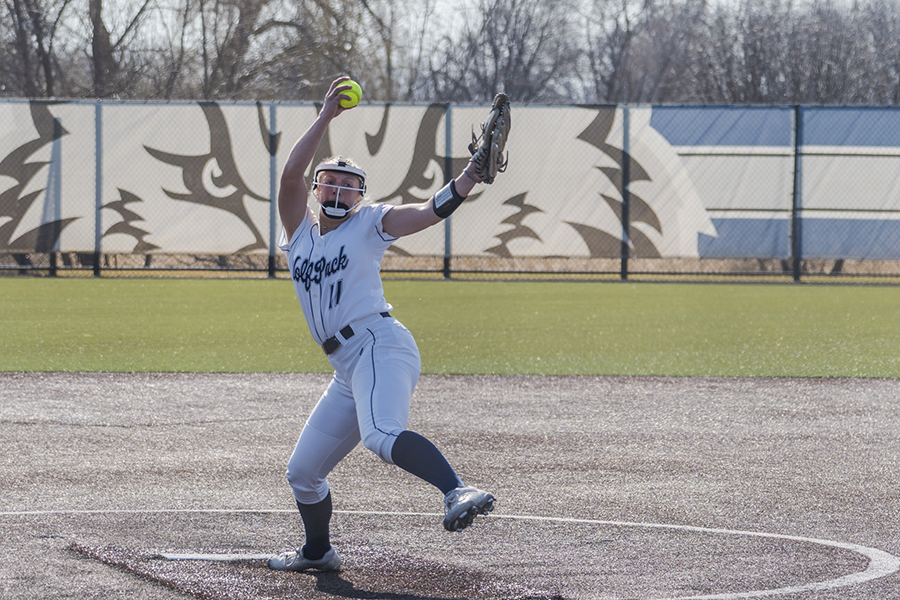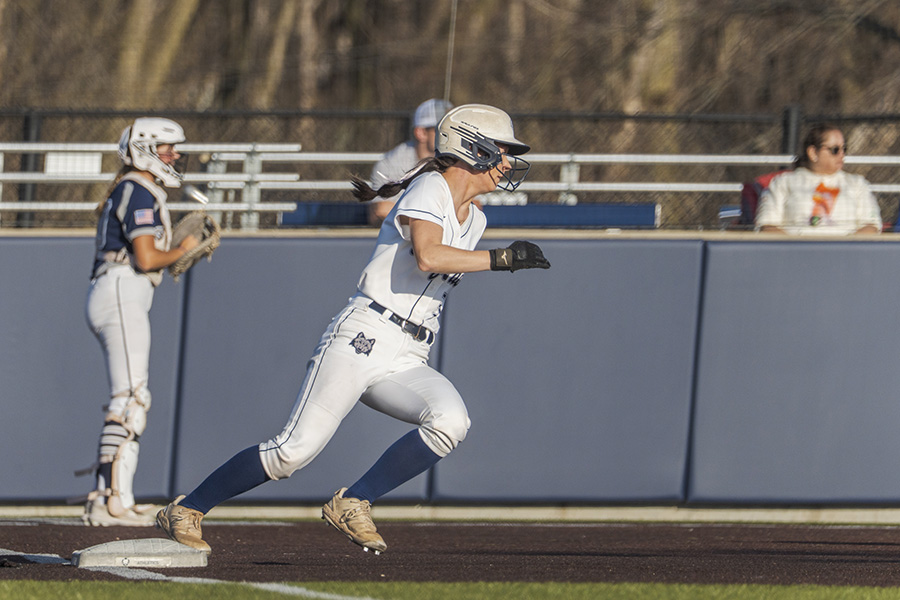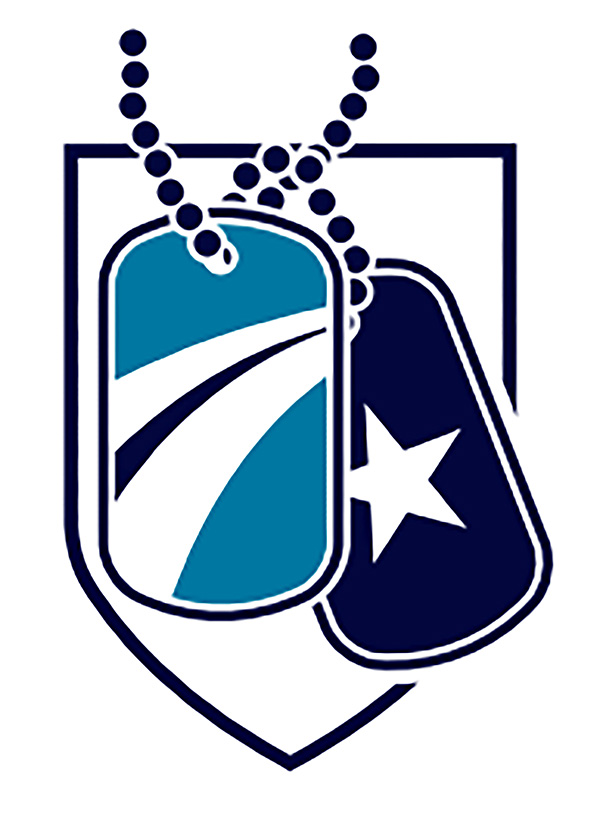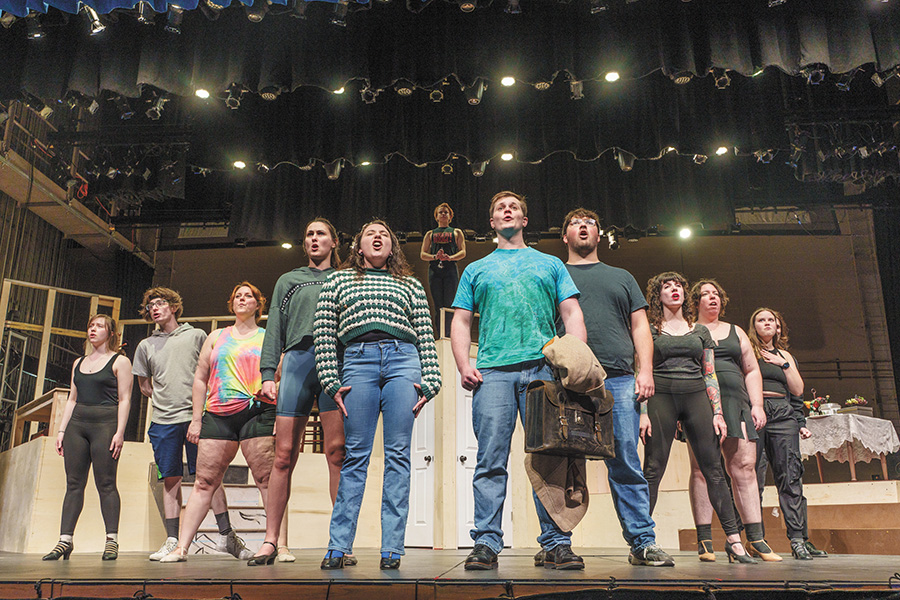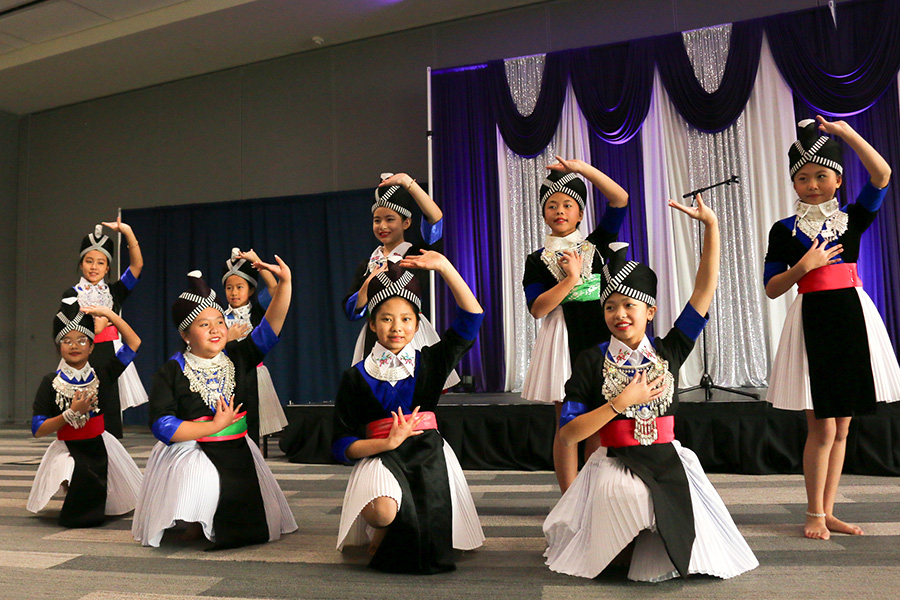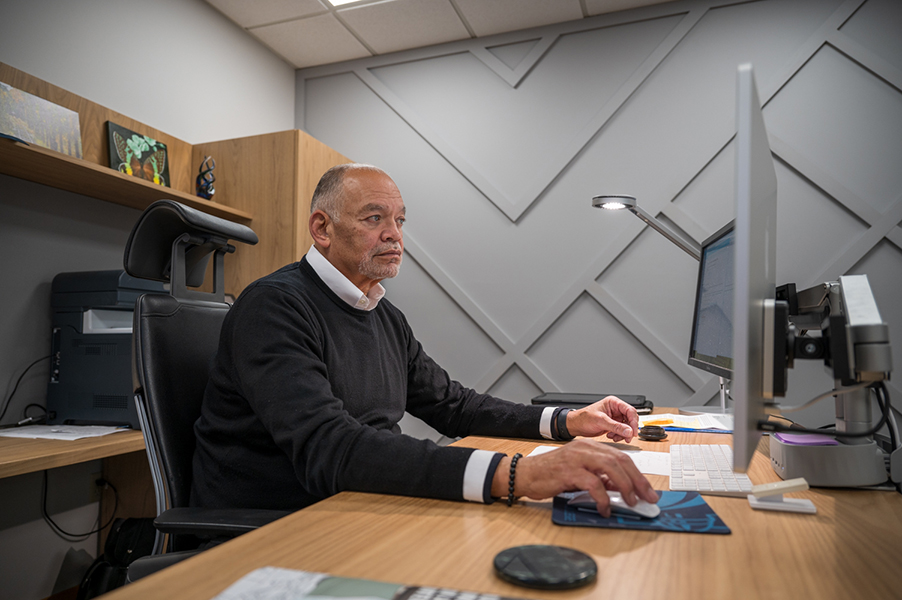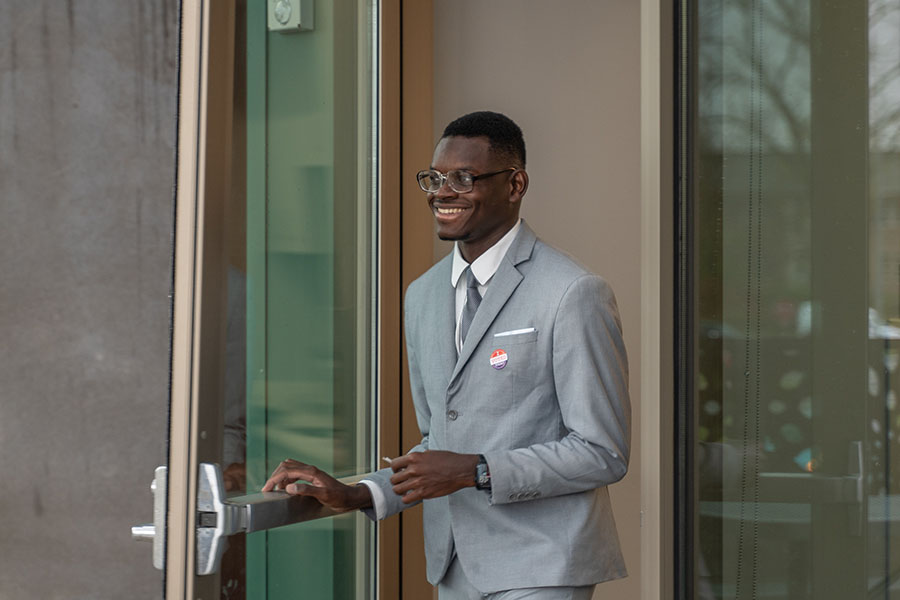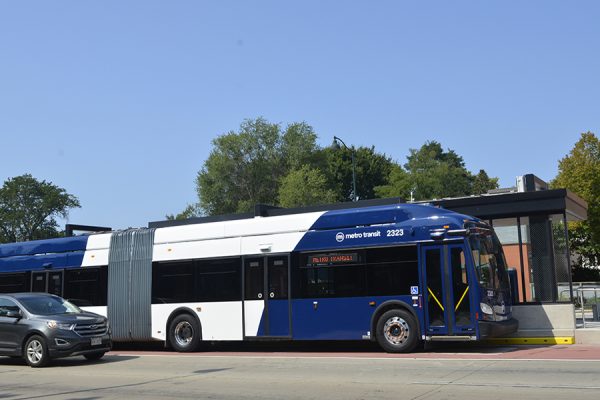Horror of war captured in art
Display in Gallery 211 showscases work of soldier turned activist
“Long Shadow” by David Giffey is on dispay through Sept. 30. Giffey will be at the artist’s reception on Sept. 22 from noon to 2 p.m.
September 21, 2016
Paintings about remembrances of the Vietnam War currently hang on the walls of Gallery 211 at Madison College’s downtown campus.
David Giffey, peace activist and war veteran, has found his “Long Shadow” series of paintings to be a peaceful way of confronting something terrible.
“I feel these are anti-war paintings,” said Giffey, sitting in the center of his gallery exhibition. “If someone disagrees with me, that’s their right, they don’t have to look.”
You can find elements of Giffey’s original black and white photographs in each of his paintings.
Next to each painting, you can read an expert from the personal journal that Giffey kept during combat.
“It’s a very private kind of journal but I share parts of it sometimes, ” he said. The chosen entries best describe Giffey’s memories and emotions regarding the paintings.
“Long Shadow” is a series of paintings that is different from Giffey’s preceding artwork. In contrast to his prior work, these paintings were done more quickly, and the coloration much redder, expressing the violence and his emotional outlook as an artist. He has decorated churches and painted murals, but these paintings are a more personal expression.
“I can’t imagine and I’ve never heard of a visual artist who tried to illustrate anything about the violence of war in any way other than just shocking violence imagery, and that is really what war is about, there is nothing romantic or peaceful about it,” he said.
“I hope that whoever really takes the time to examine, to look at the photographs, to read the labels, will realized that militarism and the traditions of militarism, really, really need to be examined,” said Giffey. Giffey’s paintings are not only an artistic expression, they are also a form of self-awareness.
“While I was in Vietnam in the war, I became very convinced that it was a terrible mistake,” said Giffey. “That we, American soldiers, should not have been there. It was not our concern.”
Giffey grew up on a very small dairy farm in Fond du Lac county in Wisconsin. He attended UW-Oshkosh but was really interested in writing and got a job with a newspaper. At that time, the ‘60s, if you weren’t in college, you were eligible to be drafted in the military. Giffey leaned towards writing over college and was drafted in 1964.
“Even though I had been politically active, I really hadn’t been aware of the south east Asia and Vietnam as a potential place where there would be a war. However, about a year later, I found myself on a ship going to Vietnam,” said Giffey.
When he was drafted for Vietnam, he was first trained as an artillery gunner, then reassigned to become the assistant editor of for the first infantry division. It was his duty to go into combat missions along with other soldiers to take photographs.
As soon as Giffey came back from war in 1966, he joined the peace movement
“I go to high schools and try to let young people know that there are alternatives to the military,” he said. “After the war in Vietnam, it was clear to me that I had to try to work for peace and justice whenever possible. It’s a helpful kind of work for me, just like visual art and writing, because it is non-violent.”
“My time in the Army and the war never leaves my mind. It was a difficult time and I will always try to overcome my participation in the military by following a peaceful path.”
Artist reception will be held Sept.22 at the Downtown Campus, with refreshments provided from noon to 2 p.m.
To see more of Giffey’s artwork you can visit davidgiffey.com.



